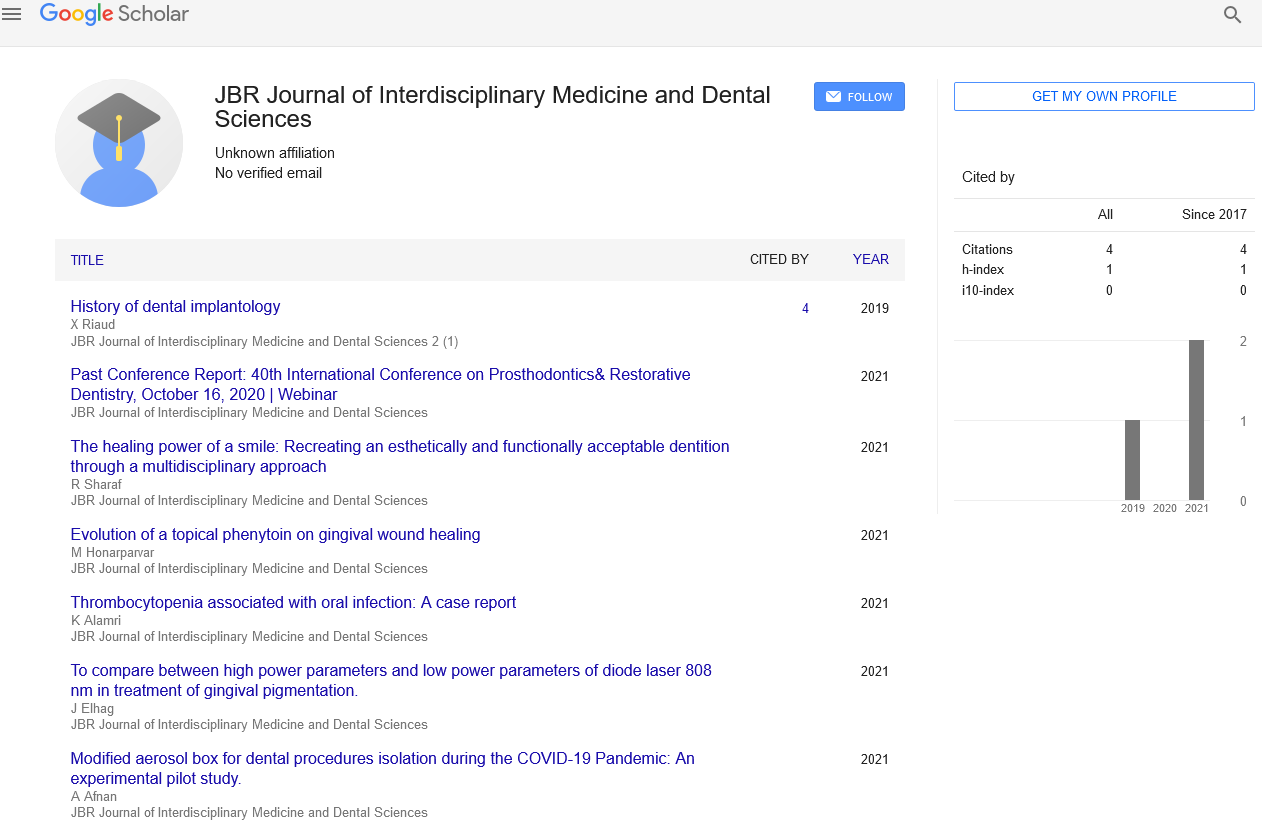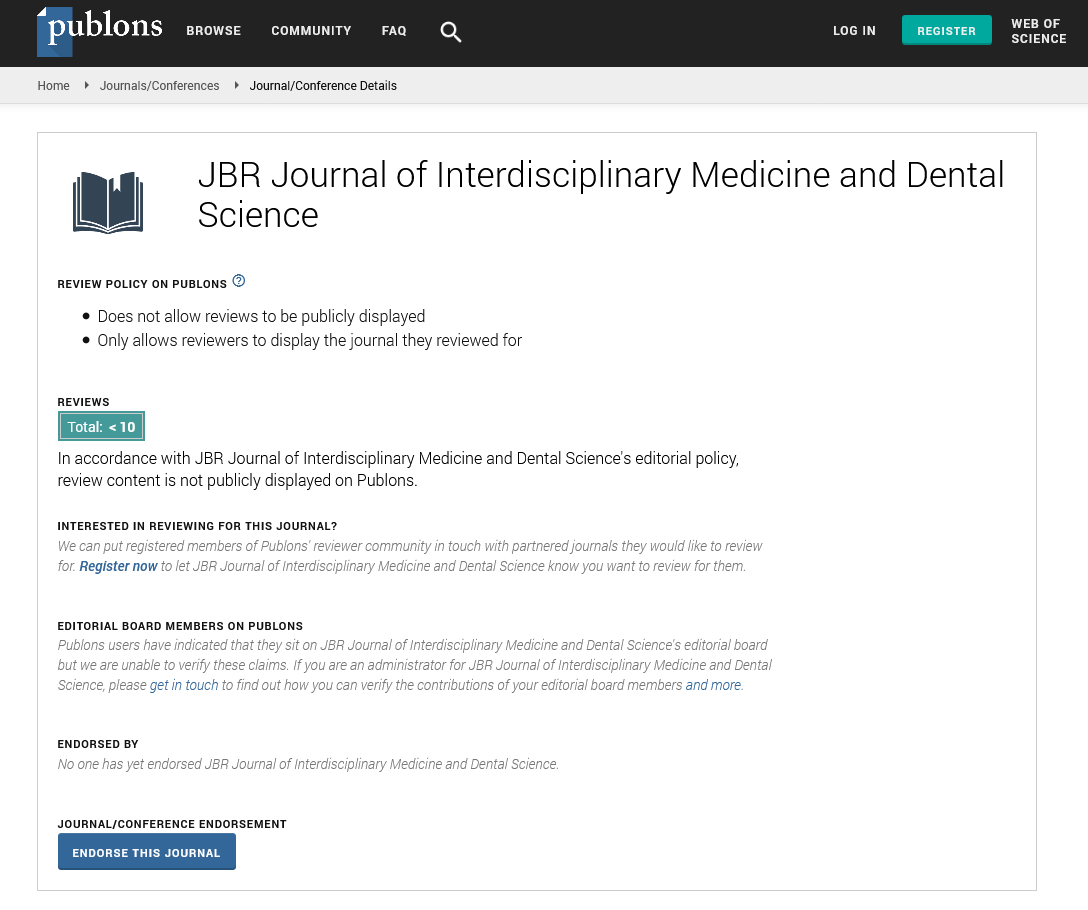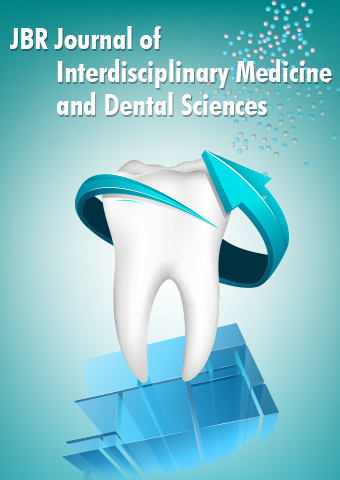Perspective - JBR Journal of Interdisciplinary Medicine and Dental Sciences (2022) Volume 5, Issue 4
Effect of Antioxidant on Human Immunodeficiency Virus
H.H.P. Cohly*
Department of Surgery, University of Mississippi Medical Center, Jackson, MS, USA
Department of Surgery, University of Mississippi Medical Center, Jackson, MS, USA
E-mail: hcohly@surgery.umsmed.edu
Received: 01-Jul-2022, Manuscript No. jimds-22-31009; Editor assigned: 04-Jul-2022, PreQC No. jimds-22-31009; Reviewed: 15- Jul-2022, QC No. jimds-22-31009; Revised: 22-Jul-2022, Manuscript No. jimds-22-31009 (R); Published: 29-Jul-2022, DOI: 10.37532/2376- 032X.2022.5(4).68-69
Abstract
Plant antioxidants may offer protection from viral replication and cell death associated with oxidative stress in patients with HIV. Proliferative responses of human mononuclear cells derived from HIV patients (chronic model) stimulated with phyohemagglutinin, concanavalin, and pokeweed mitogen were also examined in the presence of AZT and Tm. In the infection assay, T, Tm and Cu individually did not reduce p-24 antigen release. In the proliferation assay, lymphocytes from HIV-infected patients showed better inhibition of mitogen responsiveness to Tm (800ng/ml) when compared to AZT at 5 µM. Turmerin inhibited HIV-infected T-cell proliferation and, in combination with AZT, decreased T-cell infection and increased cell viability. data provide evidence suggesting that efficacious anti-HIV therapy may be possible using lower, less toxic doses of AZT in the presence of turmerin.
Keywords
Turmerin • curcumin• p-24 antigen• proliferation.
Introduction
It has been consumed in amounts up to one day for thousands of years in countries such as India. Previous pharmacological studies have demonstrated its anti-tumor, antiinflammatory, anti-infectious and antioxidant activity with very low toxicity [1]. Turmeric consists of a water-soluble component, turmerin and lipid-soluble component Curcumin, Curcumin the yellow pigments in T that is widely used as a food coloring (curry) and preservative has been extensively studied. However, Cu has been tested in clinical trials with not much success. Whereas much investigation has focused on Cu, the anti- HIV activity of T and Tm has not been well characterized to date. During HIV-infection, free radical damage may be produced, not only by a direct production of oxygen radicals by phagocytes, but also by a tumor necrosis factor (TNF)-mediated generation in target cells. Antioxidants have demonstrated protective capacity for TNF cytotoxicity. Lymphocytes from such individuals were more prone to undergo apoptosis or cell death in-vitro. Antioxidant supplementation significantly improved some measures of oxidative defence. Reduction in AZT dosage requirements through combination with some other pharmacologically-active agent would lessen toxicity while maintaining viral inhibition [2]. In addition, combination therapy facilitates drug synergism and delay development of resistance. Consumption of exogenous plant antioxidants like T, Cu and Tm can be useful in inhibiting viral activation and the death of immune cells in HIV through their antioxidant properties is not addressed in this study and will certainly warrant further investigation.
Description
The sample was centrifuged, the PBMC layer was removed and washed twice with PBS, and the cell pellet was resuspended in medium 1640 [3]. These cells were cultured in round-bottomed, well plates in RPMI 1640 medium with 10% human AB serum and antibiotics at a concentration with each well receiving 100μl of the cells. During the exponential phase of growth, cell-free supernatant was harvested, standardized for reverse transcriptase activity, and frozen. A standard curve was obtained using p24 antigen provided by the supplier. An optical density value of 1 corresponds to 200 pgs. of HIV-1 p-24 antigen. All our results had a cutoff value of 0.1 optical density units. These experiments were repeated at least twice. After 7 days, cell viability and cell number was determined by the trypan blue exclusion method. HIV-1 production was monitored at 3- and 7-day time intervals by measuring the level of p-24 antigen in culture supernatants. Decreased proliferation of T-cells from HIVinfected individuals has been previously measured in response to in-vitro stimulation with CD3 monoclonal antibody, pokeweed mitogen, alloantigen’s, and recall antigens [4]. The mechanism of action of turmeric and turmerin on HIV infection has yet to be determined. The inhibition of mitogen stimulated PBMC and CEM-ss cells suggest that the drug treatment is critical to the virus infected chronic T cell infection as well as to the virus adsorbed acute T cell infection. The viability results showed that Tm at 80ng/ml maximally increases viability when compared with turmeric and curcumin. The interesting point to note is that the higher concentration of Tm 800ng/ml increases viability only by 30% when compared with 60% with Tm at 80ng/ml indicating that higher concentrations of turmerin may be toxic. The cells were pulsed with radiolabeled thymidine for 18 hrs and then harvested for counting by liquid scintillation [5]. Responses are expressed as net cpm and dose of drug is expressed as ng/ml and μg/ml. Values represent the mean of at least triplicate readings and the standard deviation. The lowest percentage increase for infection which corresponds to an inhibition of 36.7%. ehighest percentage increase for viability which corresponds to an inhibition of 11% in the absence of AZT.
Acknowledgement
None
Conflict of Interest
No conflict of interest
References
- Sui Z, Salto R, Li J et al. Inhibition of the HIV-1 and HIV-2 proteases by curcumin and curcumin boron complexes. Bioorg. Med. Chem. 1993, 1, 415-422(1993).
- Li CJ, Zhang LJ, Dezube BJ. Three inhibitors of type 1 human immunodeficiency virus long terminal repeat-directed gene expression and virus replication. Proc. Natl. Acad. Sci. U. S. A.90, 1839-1842(1999).
- Chan MM. Inhibition of tumor necrosis factor by curcumin, a phytochemical. Biochem. Pharm.49, 1551-1556(1995).
- James JS. Curcumin: clinical trial finds no antiviral effect. AIDS Treat. News.1 (no 242), 1- 2(1996)
- Favier A, Sappey C, Leclerc P et al. Antioxidant status and lipid peroxidation in patients infected with HIV. Chem.-Biol. Interact. 91,165-180(1994).
Indexed at, Google Scholar, Crossref
Indexed at, Google Scholar, Crossref
Indexed at, Google Scholar, Crossref


